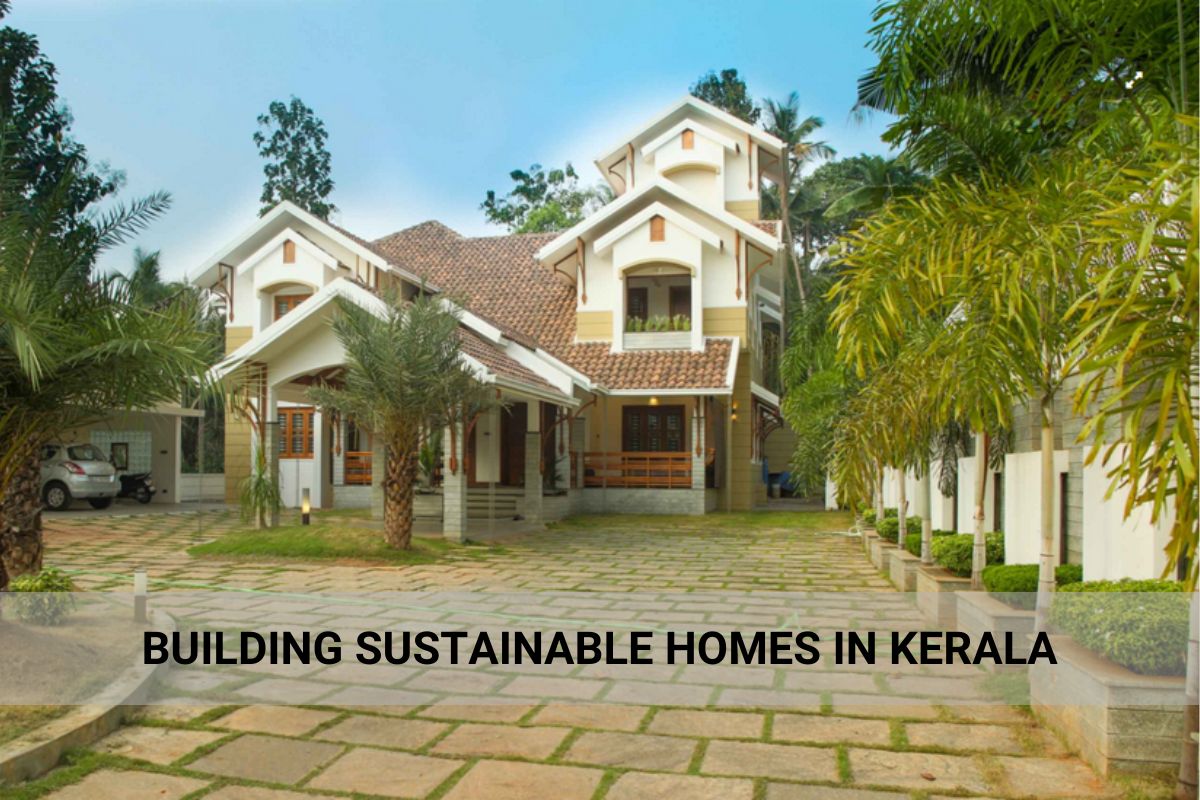


Building a sustainable home is more than just a trend—it’s a smart and responsible way to design a house that not only reduces environmental impact but also ensures long-term savings and comfort. In Kerala, where nature is an integral part of our lifestyle, the need for eco-friendly homes is even more significant. By using sustainable materials and thoughtful design techniques, you can create a home that works in harmony with the environment, while still providing modern comforts.
In this blog, we’ll guide you through the best materials and design tips for building sustainable homes in Kerala, making sure your home is energy-efficient, durable, and cost-effective.
One of the most important aspects of building a sustainable home is the materials you choose. In Kerala, we’re fortunate to have access to a variety of natural and locally sourced materials that not only reduce transportation costs but also blend seamlessly with the environment.
A. Laterite Stone: Widely available in Kerala, laterite is not only sustainable but also highly durable and thermally efficient, making it perfect for walls. Its porous nature helps keep the home cool in hot weather.
B. Bamboo: Lightweight, renewable, and strong, bamboo is an excellent material for roofs, furniture, and even flooring. It grows quickly, making it an eco-friendly option that adds a rustic charm to your home.
C. Clay: Whether it’s for bricks or tiles, clay is another material that’s locally available and sustainable. Clay tiles on the roof offer excellent insulation, while clay bricks keep the interiors cool, especially in Kerala’s tropical climate.
Kerala’s warm and humid climate requires homes to be designed with good airflow and cooling in mind. Passive design strategies allow you to reduce the need for air conditioning and artificial lighting, saving both energy and money.
* Cross Ventilation: Design your home with strategically placed windows and doors to encourage cross ventilation. This ensures fresh air circulation, keeping your home cool without the need for excessive fan or AC use.
* Courtyards and Verandas: Traditional Kerala homes are famous for their courtyards (nalukettu) and verandas, which allow natural light and air to filter into the home. These elements can be adapted in modern sustainable homes to enhance cooling and reduce energy consumption.
* Sloped Roofs: Opt for sloped roofs with overhangs, a common feature in Kerala’s vernacular architecture, to protect the house from heavy rains and direct sunlight while allowing hot air to escape through ventilation gaps.
Windows are not just for views—they play a significant role in how energy-efficient your home is. In Kerala, where the climate is often hot, having well-insulated windows can make a huge difference in maintaining a comfortable indoor temperature.
* Double Glazing: Double-glazed windows trap heat during colder seasons and help keep interiors cool during hot months, making your home more energy-efficient year-round.
* Reflective Glass: Consider using reflective or tinted glass to reduce the amount of heat entering the home while still allowing natural light in. This can significantly cut down the need for artificial cooling.
* Roof and Wall Insulation: Proper insulation, especially on the roof, is essential for keeping your home cool. Materials like recycled cotton, sheep wool, or even cork can be used for eco-friendly insulation.
Kerala receives a generous amount of rainfall, and you can put that to good use by integrating rainwater harvesting systems into your home design. Collecting and storing rainwater not only reduces dependence on external water sources but also helps in water conservation during drier months.
* Rainwater Tanks: Install tanks to collect rainwater from your roof, which can then be filtered and used for gardening, cleaning, or even household use if treated properly.
* Permeable Paving: To manage stormwater runoff, use permeable materials for outdoor areas like driveways and pathways. This allows water to seep into the ground, replenishing the groundwater table and reducing the risk of flooding.
Kerala is blessed with abundant sunlight throughout the year, making solar power a highly viable option for sustainable homes. Installing solar panels can significantly cut down on your electricity bills and reduce your carbon footprint.
* Solar Panels: Solar photovoltaic (PV) panels can be installed on rooftops to generate electricity, reducing reliance on grid power. For homes in rural areas or those prone to power outages, solar panels offer a reliable and renewable energy source.
* Solar Water Heaters: Instead of traditional electric or gas water heaters, consider installing a solar water heating system, which can provide hot water year-round with minimal environmental impact.
Your choice of flooring can make a big difference when it comes to sustainability. Fortunately, there are several eco-friendly flooring options available that are both stylish and durable.
* Cement Tiles: A popular choice in Kerala, cement tiles are made using natural materials and offer a cool surface, which is perfect for the tropical climate.
* Bamboo Flooring: Bamboo is not only a renewable resource but also highly durable, making it a great alternative to traditional hardwood. It’s perfect for homeowners looking to maintain a natural look while being eco-conscious.
* Recycled Wood: Using reclaimed or recycled wood for flooring or furniture is a great way to reduce demand for new timber while adding a rustic, timeless charm to your home.
Landscaping is an essential part of sustainable home design, and incorporating native plants and green spaces can enhance your home’s environmental efficiency.
* Native Plants: Choose local, drought-resistant plants that thrive in Kerala’s climate without needing excessive water or fertilizers. They require less maintenance and create a natural habitat for local wildlife.
* Green Roofs and Walls: For an eco-friendly touch, consider adding green roofs or vertical gardens. These features provide insulation, reduce heat, and improve air quality while giving your home a lush, natural look.
Building a sustainable home in Kerala doesn’t just benefit the environment but also leads to long-term savings, improved comfort, and a healthier living space. Choosing the right materials, focusing on energy efficiency, and designing your home with nature in mind allows you to create a home that stands the test of time and minimizes its environmental impact.
Looking to build a sustainable home in Kerala?
Our expert architects can guide you through the process, from choosing eco-friendly materials to designing an energy-efficient home that meets your needs. Contact us today to get started on your dream project.